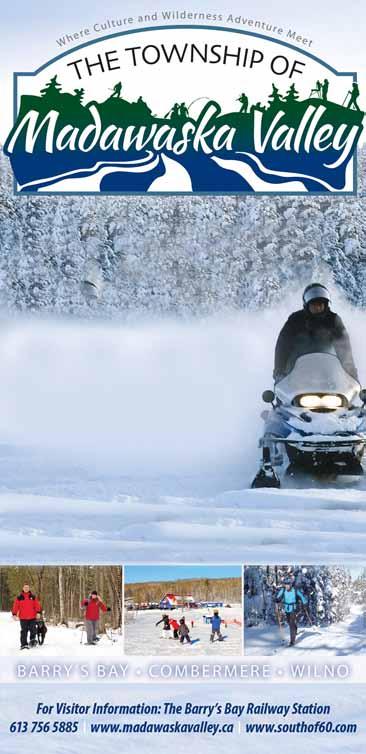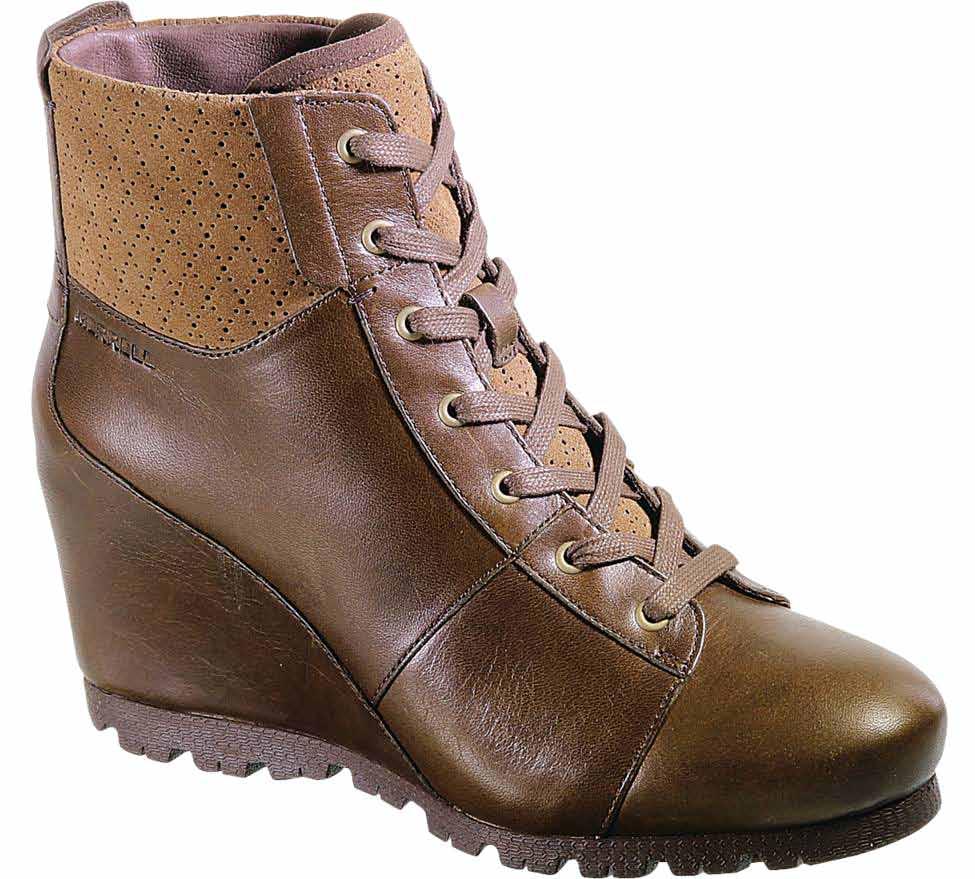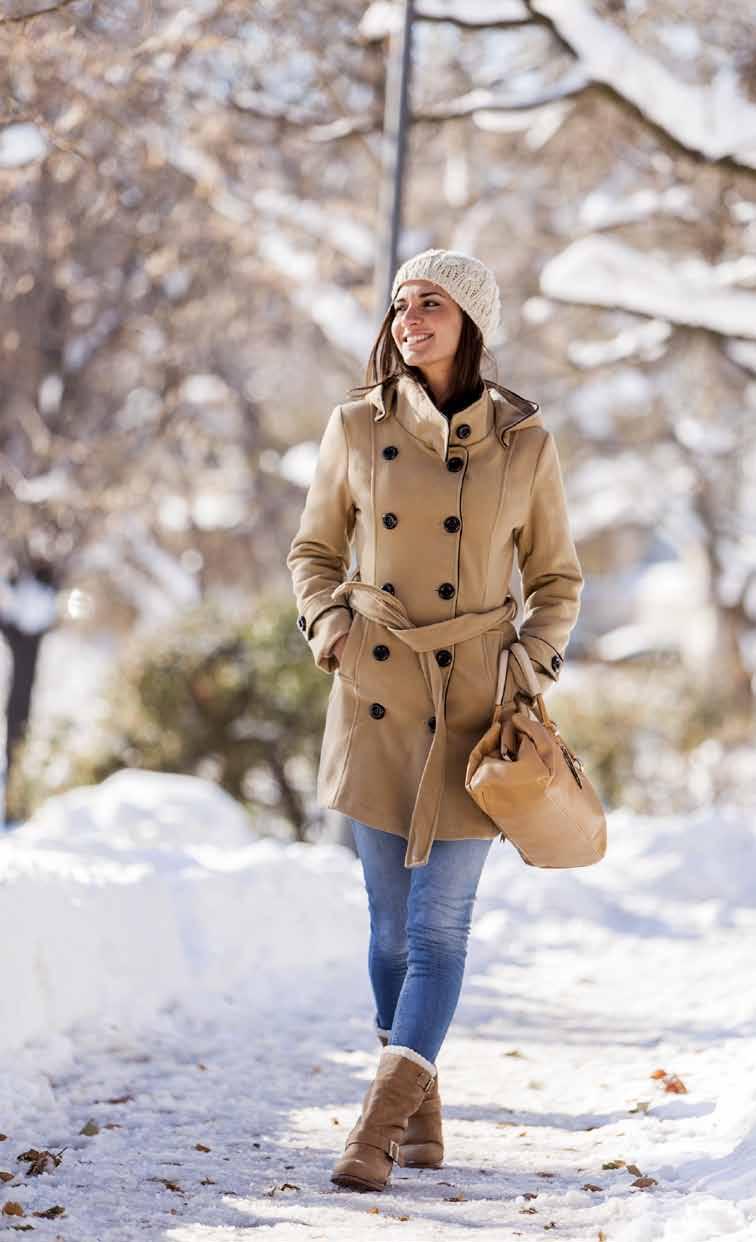
5 minute read
Put your best foot forward
Kathleen Wilker
Tackling deep powder in snowshoes. M ost of us know how to buy shoes that fit. You choose a pair you like and ask for your size. Put them on and walk around the store to make sure your toes have wiggle room and the heels aren’t slopping up and down.
Advertisement
We’re comfortable enough with this process so we use it for more specialized footwear, and it doesn’t always work.
Ottawa Outdoors went looking for advice from local cycling, rock climbing, cross-country ski and snowshoe departments – how do you get the right fit for footwear that isn’t designed for walking? These tips are guidelines. Combine them with talking to a sales expert and walk out with footwear that will encourage – not squelch – passion for your sport.
Start by telling that sales pro your level of experience and expertise, whatever the sport.
Snowshoes Snowshoes are sized based on the height and weight of the snowshoer as well as the intended terrain – on or off trail, steep or flat.
Ryan Dubyk at SAIL started with this advice: Think about what you’re going to weigh when you are actually snowshoeing – after all that holiday food, and after you pile on jacket, snow pants, outer wear, boots, and a backpack if you use one.
“If you are mostly planning to go off-trail, you’ll want larger snowshoes,” says Dubyk. “Smaller snowshoes are more appropriate for on-trail where the snow is already packed down.” Whether you tackle steep trails in Gatineau Park or cross flat frozen rivers and lakes determines how whether you want aggressive crampons underneath your snowshoe.
As to price, more dollars equals less weight. Cheapies weigh a lot.
Dubyk recommended a gender-specific fit as women’s snowshoes are designed for a women’s typically narrower stride, which means less snow being kicked up.
Dubyk had an optimistic note for snowlovers. Ottawa-Gatineau is good for snowshoeing because the region’s snow consistency tends to be dense and wet so you won’t sink as deeply as you would in the fluffier stuff further afield.
Cross-country ski boots At Greg Christie’s ski and bike shop, the Nordic and skate-skiing guru himself shed some light on choosing the perfect ski boot. His most emphatic point was to decide on a boot that fits your foot – not one that fits your bindings – to get the most out of skiing: “Your boot is the most important part of your ski system.”
For skate-skiing, Christie said put the boot on, have your toes touch the end, and be able to slip an index finger in behind your heel.
This winter choose the Madawaska Valley

Backcountry winter expedition with friends.
Instead of walking around the store – which could mean asking for a smaller size because the heel might move – Christie said just mimic skating movements to find out whether your feet are held in securely.
Nordic ski boots need to be more flexible to allow the foot to bend through the kick and glide.
Christie had the standard socks-warning for cold feet. “Skiing is a high-energy sport,” he said. So layering too many socks or too thick socks will hamper circulation and make your feet colder. If boots fit well, feet stay warm.
He also said that formerly expensive heatfitting foam insoles – they mold to the foot through body heat – are now more common and cheaper.
Climbing shoes Zach Robert in MEC’s climbing department points to two kinds of climbing shoes – leath

er and synthetic. Because leather stretches, choose a form fitting pair, with no dead space, likely down one shoe size from street shoes, “but don’t get carried away with a fit that’s too tight. If you’re crying because your shoes are too tight, you won’t see your hold.”
Synthetic shoes have grown in popularity along with bouldering, but they don’t stretch the way leather does. “The fit is more precise,” Robert said., so climbers should try on different brands to find a pair that fits their foot width. And for synthetics, climbers can stick with a size the same as their shoe.
The next question is Velcro or laces. Velcro is a better choice for bouldering because climbers usually take shoes off when they are finished an attempt and “laces are too much of a hassle.”
But with a leather shoe, laces are better because the material stretches. And if one foot is larger than the other, leather shoes stretch for a better fit. Try climbing shoes on both feet

if this is the case.
And you don’t have to try them on and walk around the store or jump in them. In fact, walking around in them anywhere, even an indoor gym, needlessly wears out the soft rubber sole which beginners especially need for climbing.
Cycling shoes There are three kinds of this popular footwear – road, mountain and touring. Because cycling shoes clip into the pedals, they boost pedal stroke efficiency by maximizing the pull-up and well as the push-down.
Cycling shoes for road riding have a smooth sole to maximize pedaling efficiency, mountain bike shoes have grippy treads to help you walk your bike over rough patches, and touring shoes have a recessed cleat so you can walk easily in them when you are off your bike (stylish touring shoes that look more like a dress shoe are coming, for cyclists who care about appearance).
Lucas Wiseman at Bushtukah said almost every company that makes bike shoes sizes them in European measures, which are more accurate than the North American version, so start by measuring your foot to determine its European size.
“Cycling shoes are designed to be snug, not tight,” Wiseman said, so tell the sales rep if your feet are particularly wide or narrow – different brands handle these extremes dif- ferently. “At the entry level, you are going for comfort rather than tightness,” he said, noting that the heel shouldn’t lift from the back of the shoe.
If you’re looking for a cycling shoe for a spin class, touring shoes are likely best, Wiseman said, and it’s important that pedals, cleats and shoes are all compatible.
















